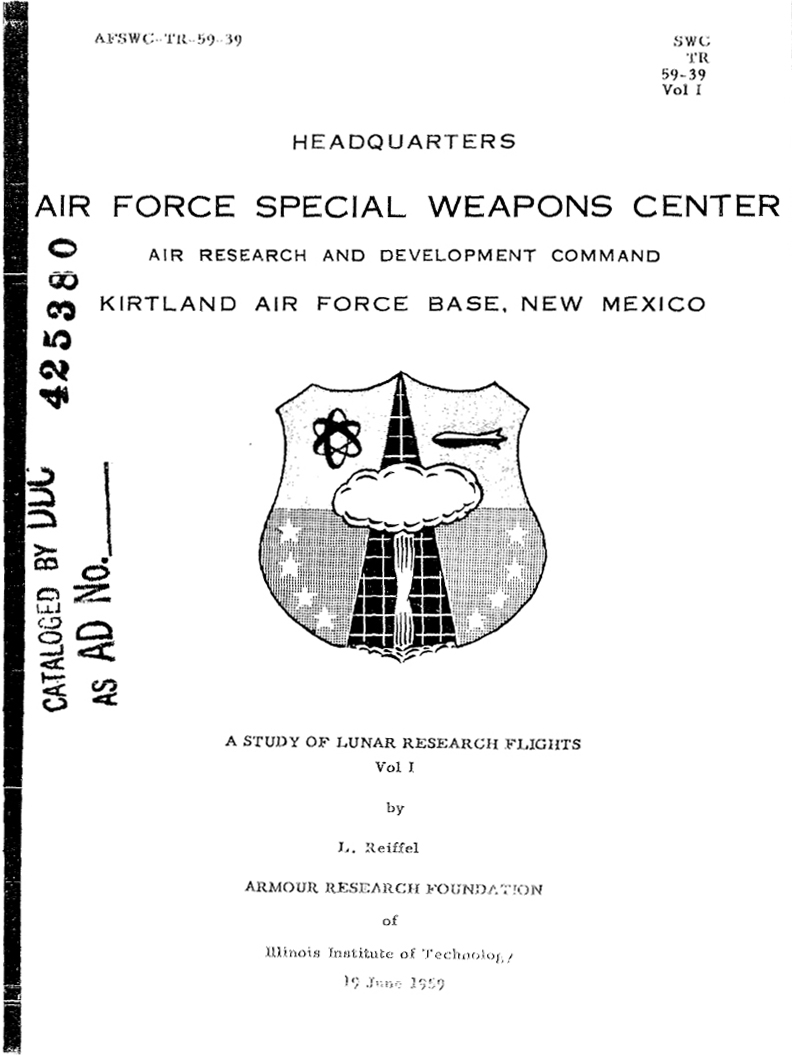Project A119, a.k.a. A Study of Lunar Research Flights, was a top-secret plan from 1958 by the US Air Force. The aim of the project A119 was to detonate a nuclear bomb on the Moon surface which would help in resolving the mysteries in planetary astrogeology and astronomy. If the nuclear bomb detonated on the surface, not in a crater, the flash of an explosion would have been barely visible to people on earth with their naked eye, a show of force resulting in a boosting of domestic morale, a boost that was needed after the Soviet Union launched Sputnik and took an early lead in the Space Race.
The project A119 was never carried out, being cancelled out of a fear of a negative public reaction and because a Moon landing would undoubtedly be a more popular triumph in the eyes of the international and American public. A similar project by the Soviets also never came to fruition.
The existence of this USAF project was revealed in 2000 by a former executive at NASA, Leonard Reiffel, who led the project in 1958. Carl Sagan was part of the team responsible for predicting the effects of a nuclear bomb explosion in vacuum and low gravity and in evaluating the scientific value of the project. The project documents remained secret for almost 45 years. Despite Reiffel’s revelations, the United States government has never officially recognized its involvement in this study.
A ten-member team led by Leonard Reiffel was formed at the Illinois Institute of Technology to study the potential visibility of the nuclear explosion, implications for the lunar surface and benefits to science. Carl Sagan was responsible for the projection of the expansion of a dust cloud around the Moon which was an essential element in determining its visibility from Earth.
Hydrogen bomb was initially considered for the project, but the USAF vetoed this idea due to the weight of a hydrogen bomb, as it would be too heavy to be carried by the missile which would have been used. It was decided to use a W25 warhead, which was small, lightweight warhead with a low 1.7 kiloton yield. W25 would be carried toward the hidden side of the Moon, where it would detonate on impact. The dust cloud from the explosion would be lit by the Sun and visible from Earth.
The project was eventually canceled in January 1959, out of fear of a negative public reaction and the risk to the population if anything have gone wrong with the launch. Another factor, cited by Leonard Reiffel, was the possible implications of the nuclear fall out for future research projects and colonization of the Moon.
The signing of Partial Nuclear Test Ban Treaty in 1963 and Outer Space Treaty in 1967 prevented any future exploration of the concept of exploding a nuclear bomb on the Moon. By this time both the USA and the USSR had performed high-altitude nuclear explosions. By 1969, the United States had achieved a victory in the Space Race after the triumph of the Apollo 11 mission. In December that year, Apollo scientist Gary Latham proposed detonating a “smallish” nuclear bomb on the Moon in order to research its geologic make-up. The idea was not considered because it would interfere with the measurent the Moon’s natural background radiation.









